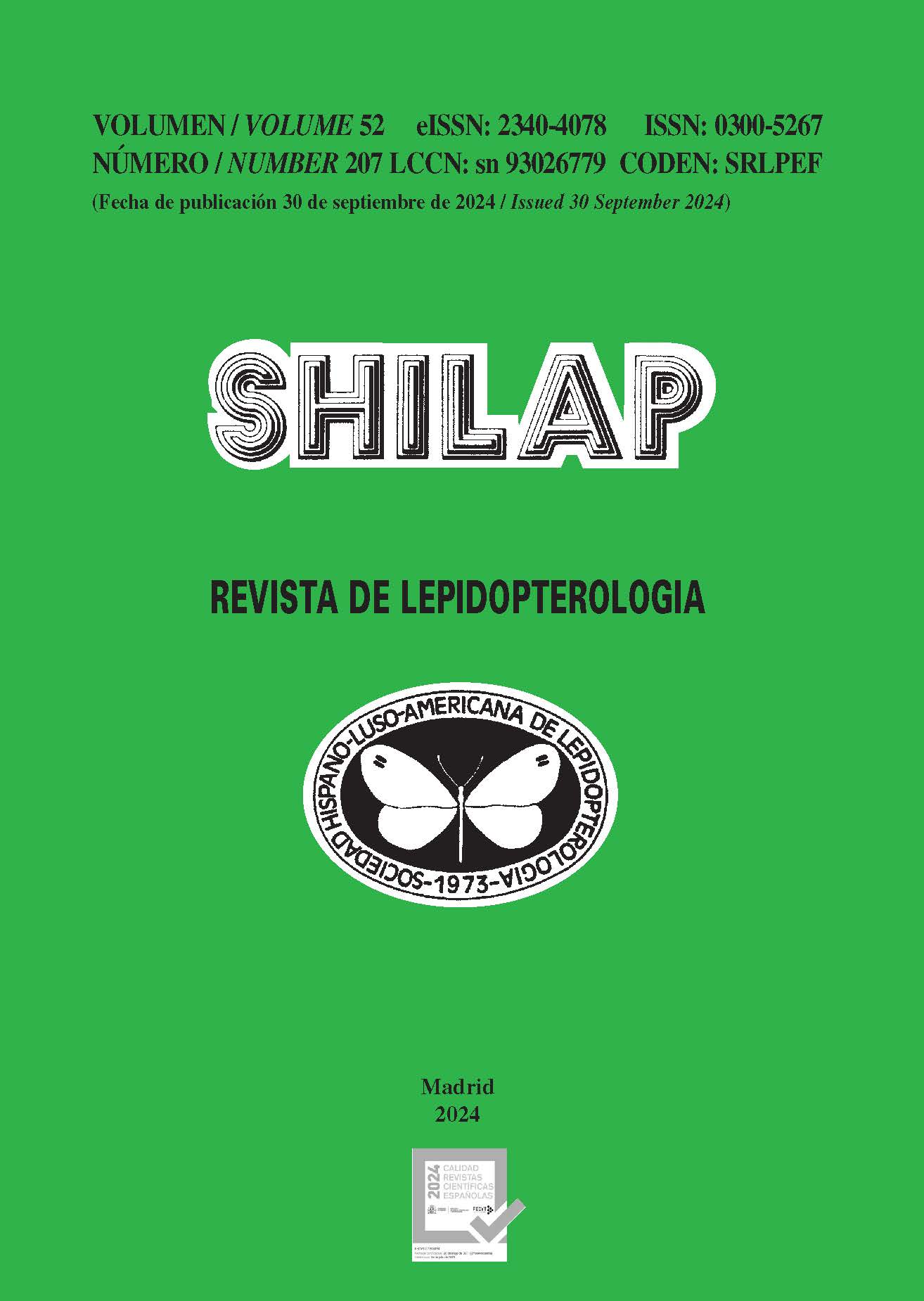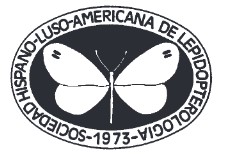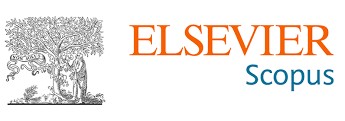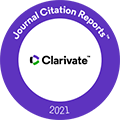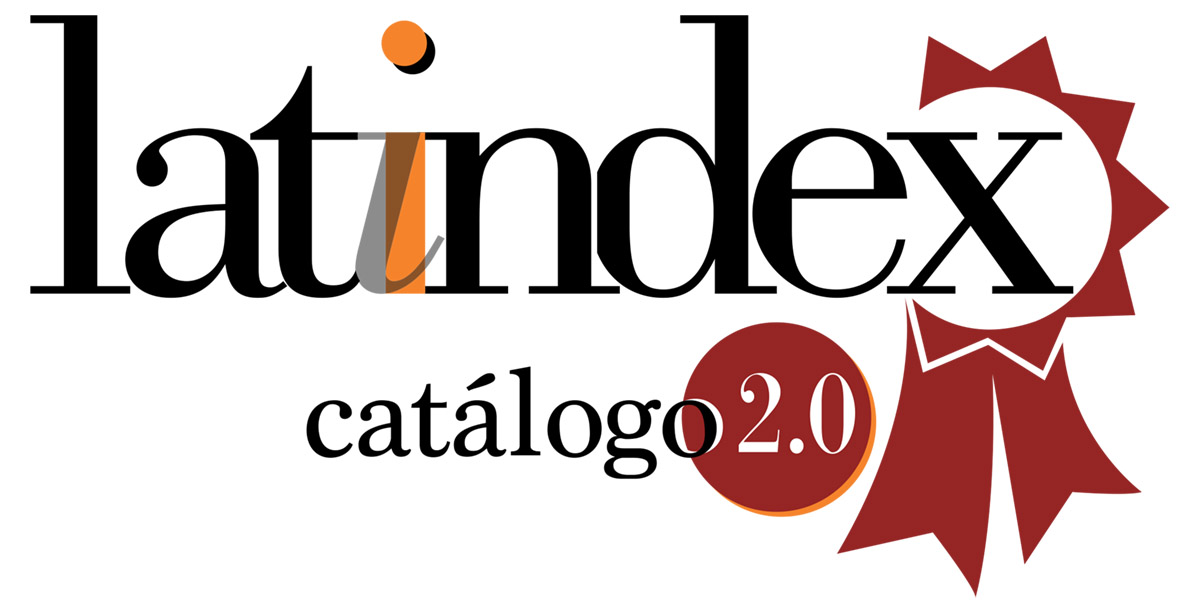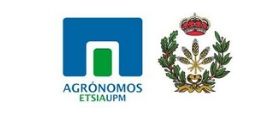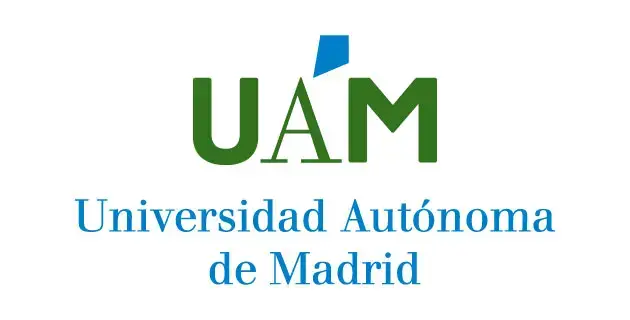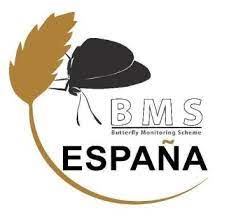First hostplant and last instar of Hydropionea fenestralis Barnes & McDunnough, 1914 in the Perote Valley, Mexico (Lepidoptera: Crambidae)
DOI:
https://doi.org/10.57065/shilap.952Schlagworte:
Lepidoptera, Crambidae, COI DNA barcode, seed feeder larvae, level of damage, Asparagales, Hydropionea, distribution, MexicoAbstract
We identified Hydropionea fenestralis Barnes & McDunnough, 1914 feeding on seeds of fruits of Agave salmiana var. ferox (K. Koch) Gentry and A. salmiana subsp. salmiana (Asparagaceae), based on DNA barcode and adult-stage morphology. This is the first host plant record, the first record last instar, and also constitutes the first Lepidoptera seed borer associated with Agave species in Mexico. The Agave variety and subspecies are used for the production of traditional fermented beverages called pulque, the economic and cultural base of the region. The mean percentage of fruit damage ranges from 13.9±19.9% to 33.2±2% in A. salmiana var. ferox and A. salmiana subsp. salmiana, respectably. Molecular evidence confirms the distribution of H. fenestralis in central Mexico in the states of Veracruz and Puebla, expanding the known geographic range of the species. This record seems to be an unusual host plant for the current phylogenetic position of H. fenestralis within the Glaphyriinae subfamily, whose larvae feed preferably Brassicales plants.
Downloads
Globale Statistiken ℹ️
|
975
Aufrufe
|
219
Downloads
|
|
1194
Gesamt
|
|
Literaturhinweise
Barnes, W., & McDunnough, J. (1914). Some new North American Pyraustinae. Contributions to the Natural History of the Lepidoptera of North America, 2(6), 224-250.
Delgado-Lemus, A., Torres, I., Blancas, J., & Casas, A. (2014). Vulnerability and risk management of Agave species in the Tehuacán Valley, México. Journal of Ethnobiology and Ethnomedicine, 10(1), 1-15. https://doi.org/10.1186/1746-4269-10-53 PMid:24994025 PMCid:PMC4106216 DOI: https://doi.org/10.1186/1746-4269-10-53
Felsenstein, J. (1985). Confidence limits on phylogenies: an approach using the bootstrap. Evolution, 39(4), 783-791. https://doi.org/10.2307/2408678 PMid:28561359 DOI: https://doi.org/10.1111/j.1558-5646.1985.tb00420.x
Figueroa-Castro, P., López-Martínez, V., Toledo-Hernández, V. H., & Rifkind, J. (2017). Primer registro del entomófago Enoclerus zonatus (Coleoptera: Cleridae) asociado con el quiote de maguey mezcalero en Guerrero, México. Revista Mexicana de Biodiversidad, 88(2), 467-470. https://doi.org/10.1016/j.rmb.2017.03.025 DOI: https://doi.org/10.1016/j.rmb.2017.03.025
García-Mendoza, A. (2002). Distribution of agave (Agavaceae) in México. Cactus and Succulent Journal, 74(4), 177-188.
Garrido, G. Y., & Nava-Bringas, M. E. (2017). Descripción del Valle de Perote. In A. Ochoa-Martínez, editor. Valle de Perote. Aspectos bioclimáticos y socioeconómicos (pp. 19-23). IETECArana Editores.
GBIF (2024). Hydropionea Hampson, 1917. http://www.gbif.org/species/1883821
Hajibabaei, M., Janzen, D. H., Burns, J. M., Hallwachs, W., & Hebert, P. D. (2006). DNA barcodes distinguish species of tropical Lepidoptera. Proceedings of the National Academy of Sciences, 103(4), 968-971. https://doi.org/10.1073/pnas.0510466103 PMid:16418261 PMCid:PMC1327734 DOI: https://doi.org/10.1073/pnas.0510466103
Hall, T. A. (1999). BioEdit: a user-friendly biological sequence alignment editor and analysis program for Windows 95/98/NT. Nucleic acids symposium series, 41(41), 95-98.
Hopkins, R. J., van Dam, N. M., & van Loon, J. J. (2009). Role of glucosinolates in insect-plant relationships and multitrophic interactions. Annual review of entomology, 54, 57-83. https://doi.org/10.1146/annurev.ento.54.110807.090623 PMid:18811249 DOI: https://doi.org/10.1146/annurev.ento.54.110807.090623
Janzen, D. H., & Hallwachs, W. (2009). Dynamic database for an inventory of the macrocaterpillar fauna, and its food plants and parasitoids, of Area de Conservación Guanacaste (ACG), northwestern Costa Rica. http://janzen. sas. upenn. edu.
Jiménez-Pérez, N. D. C., Hernández-Jiménez, O. A., & García-Mendoza, A. J. (2021). Agave guadarramae (Asparagaceae: Agavoideae), una especie nueva del sureste de México. Revista Mexicana de Biodiversidad, 92(agosto-septiembre). https://doi.org/10.22201/ib.20078706e.2021.92.3726 DOI: https://doi.org/10.22201/ib.20078706e.2021.92.3726
Kala, C., & Khan, N. A. (2020). Isolation and characterization of isopropyl isothiocyanate isolated from seeds of Drypetes roxburghii wall and its anti-platelet and anti-thrombotic activity. Scientific African, 10, e00658. https://doi.org/10.1016/j.sciaf.2020.e00658 DOI: https://doi.org/10.1016/j.sciaf.2020.e00658
Kimura, M. (1980). A simple method for estimating evolutionary rates of base substitutions through comparative studies of nucleotide sequences. Journal of Molecular Evolution, 16, 111-120. https://doi.org/10.1007/ BF01731581 PMid:7463489 DOI: https://doi.org/10.1007/BF01731581
Laguerre, M. (2014). Partial revision of the genus Homoeocera Felder, 1874, and description of three new species. Antenor, 1(2), 153-172.
Landry, B., Basset, Y., Hebert, P. D., & Maes, J. M. (2020). On the Pyraloidea fauna of Nicaragua. Tropical Lepidoptera Research, 30(2), 93-102.
Magallán-Hernádez, F., & Hernández-Sandoval, L. (2000). La familia Agavaceae en el estado de Querétaro, México. Botanical Sciences, 66, 103-112. https://doi.org/10.17129/botsci.1616 DOI: https://doi.org/10.17129/botsci.1616
Mally, R., Hayden, J., Neinhuis, C., Jordal, B., & Nuss, M. (2019). The phylogenetic systematics of Spilomelinae and Pyraustinae (Lepidoptera: Pyraloidea: Crambidae) inferred from DNA and morphology. Arthropod Systematics & Phylogeny, 77, 141-204.
Martínez-Salvador, M., Valdez-Cepeda, R., Arias, H. R., Beltrán-Morales, L. F., Murillo-Amador, B., Troyo-Diéguez, E., & Ortega-Rubio, A. (2005). Distribution and density of maguey plants in the arid Zacatecas Plateau, Mexico. Journal of Arid Environments, 61(4), 525-534. https://doi.org/10.1016/j.jaridenv.2004.10.002 DOI: https://doi.org/10.1016/j.jaridenv.2004.10.002
Munroe, E., Becker, V. O., Shaffer, J. C., Shaffer, M., & Solis, M. A. 1995. Pyraloidea, (pp. 34-105). In J. B. Heppner (ed.), Atlas of Neotropical Lepidoptera. Checklist: part 2: Hyblaeoidea - Pyraloidea - Tortricoidea. Scientific Publishers, Inc., Gainesville.
Munroe, E., & Solis, M. A. (1999). The Pyraloidea. In N. P. Kristensen. Handbook of Zoology (Vol. 35, pp. 231-256). Walter de Gruyter. https://doi.org/10.1515/9783110804744.233 DOI: https://doi.org/10.1515/9783110804744.233
Nuss, M., Landry, B., Mally, R., Vegliante, F., Tränkner, A., Bauer, F., Hayden, J., Segerer, A., Schouten, R., Li, H., Trofimova, T., Solis, M. A., De Prins, J., & Speidel, W. (2003-2022) Global Information System on Pyraloidea. https:// www.pyraloidea.org.
Powell, J. A., & Opler, P. A. (2009). Moths of western north America (Vol. 64). Berkeley University of California Press. https://doi.org/10.1525/california/9780520251977.001.0001 DOI: https://doi.org/10.1525/california/9780520251977.001.0001
Regier, J. C., Mitter, C., Solis, M. A., Hayden, J. E., Landry, B., Nuss, M. Simonsen T. J., Yen, S. H., Zwick A., & Cummings, M. P. (2012). A molecular phylogeny for the pyraloid moths (Lepidoptera: Pyraloidea) and its implications for higher-level classification. Systematic Entomology, 37(4), 635-656. https://doi.org/10.1111/j.1365-3113.2012.00641.x DOI: https://doi.org/10.1111/j.1365-3113.2012.00641.x
Reynoso-Santos, R. (2012). Identificación taxonómica de agaves (Agave ssp.) utilizados para la elaboración del licor comiteco en Chiapas, México. Agro Productividad, 5(4): julio-agosto.
Rodman, J. E., Soltis, P. S., Soltis, D. E., Sytsma, K. J., & Karol, K. G. (1998). Parallel evolution of glucosinolate biosynthesis inferred from congruent nuclear and plastid gene phylogenies. American Journal of Botany, 85(7), 997-1006. https://doi.org/10.2307/2446366 PMid:21684983 DOI: https://doi.org/10.2307/2446366
Rodríguez, W. D., Navarrete-Heredia, J. L., Vasquez-Bolanos, M., Rodríguez, R., Briceño-Félix, G. A., Blanco, J. M. C., & Ruiz-Cancino, E. (2019). Insects associated with the genus Agave spp. (Asparagaceae) in Mexico. Zootaxa, 4612(4), 451-493. https://doi.org/10.11646/zootaxa.4612.4.1 PMid:31717037 DOI: https://doi.org/10.11646/zootaxa.4612.4.1
Rojas, G. A., Solano, J. P. L., & Pérez, J. E. R. (2007). Diversidad genética en poblaciones de agaves pulqueros (Agave spp.) del nororiente del Estado de México. Revista Fitotecnia Mexicana, 30(1), 1-12. https://doi.org/10.35196/rfm.2007.1.1 DOI: https://doi.org/10.35196/rfm.2007.1.1
Saitou, N., & Nei, M. (1987). The neighbor-joining method: a new method for reconstructing phylogenetic trees. Molecular Biology and Evolution, 4(4), 406-425.
Scholtens, B. G., & Solis, M. A. (2015). Annotated check list of the Pyraloidea (Lepidoptera) of America North of Mexico. ZooKeys, 535, 1. https://doi.org/10.3897/zookeys.535.6086 PMid:26668552 PMCid:PMC4669914 DOI: https://doi.org/10.3897/zookeys.535.6086
Solis, M. (2007). Phylogenetic studies and modern classification of the Pyraloidea (Lepidoptera). Revista Colombiana de Entomología, 33(1), 1-8. https://doi.org/10.25100/socolen.v33i1.9306 DOI: https://doi.org/10.25100/socolen.v33i1.9306
Soltis, P. S., & Soltis, D. E. (2004). The origin and diversification of angiosperms. American Journal of Botany, 91(10), 1614-1626. https://doi.org/10.3732/ajb.91.10.1614 PMid:21652312 DOI: https://doi.org/10.3732/ajb.91.10.1614
Tamura, K., Stecher, G., & Kumar, S. (2021). MEGA11: molecular evolutionary genetics analysis version 11. Molecular Biology and Evolution, 38(7), 3022-3027. https://doi.org/10.1093/molbev/msab120 PMid:33892491 PMCid:PMC8233496 DOI: https://doi.org/10.1093/molbev/msab120
Trejo, L., Reyes, M., Cortés-Toto, D., Romano-Grande, E., & Muñoz-Camacho, L. L. (2020). Morphological diversity and genetic relationships in pulque production agaves in Tlaxcala, Mexico, by means of unsupervised learning and gene sequencing analysis. Frontiers in Plant Science, 11, 524812. https://doi.org/10.3389/fpls.2020.524812 PMid:33013957 PMCid:PMC7505951 DOI: https://doi.org/10.3389/fpls.2020.524812
Vasconcelos, S. T. C., Posadas, L. D. M. R., Moya, E. G., Villa, M. S., & Huerta, N. C. (2020). crecimiento y tasa de intercambio de CO2 de maguey pulquero (Agave salmiana Otto ex Salm-Dyck) obtenido por semilla. Agrociencia, 54(7), 911-926. https://doi.org/10.47163/agrociencia.v54i7.2242 DOI: https://doi.org/10.47163/agrociencia.v54i7.2242
World Flora Online (2024). Available on http://www.worldfloraonline.org.
Veröffentlicht
Zitationsvorschlag
Ausgabe
Rubrik
Lizenz
Copyright (c) 2024 Rogelio Lara-González, Luis A. Lara-Pérez, Ángel I. Ortiz-Ceballos

Dieses Werk steht unter der Lizenz Creative Commons Namensnennung 4.0 International.
Der Autor behält sich seine Marken- und Patentrechte an allen in diesem Artikel enthaltenen Verfahren und Prozessen vor.
Der Autor behält sich das Recht vor, den im SHILAP Revista de lepidopterología veröffentlichten Artikel zu teilen, zu verbreiten, aufzuführen und öffentlich zu kommunizieren, mit der anfänglicher Anerkennung der Veröffentlichung im SHILAP Revista de lepidopterología.
Der Autor behält sich das Recht auf eine spätere Veröffentlichung seiner Arbeit vor, von der Verwendung des Artikels bis hin zur Veröffentlichung in einem Buch, vorausgesetzt, er weist auf die Erstveröffentlichung im SHILAP Revista de lepidopterología hin.
Jeder Einreichung für das SHILAP Revista de lepidopterología muss eine Anerkennung des Urheberrechts und eine Bestätigung der Autorenschaft beigefügt sein. Mit ihrer Annahme behalten die Autoren das Urheberrecht an ihrer Arbeit und erklären sich damit einverstanden, dass der Artikel, wenn er von SHILAP Revista de lepidopterología zur Veröffentlichung angenommen wird, für die Nutzung und Verbreitung unter einer "Creative Commons Attribution 4.0 International" (CC BY 4.0)-Lizenz lizenziert wird, die es Dritten erlaubt, den Inhalt für jeden Zweck zu teilen und zu bearbeiten, wobei das Originalwerk angemessen zu erwähnen ist.
Eine informative Version und den Rechtstext der Lizenz finden Sie hier. Der Hinweis auf die CC BY 4.0-Lizenz muss erforderlichenfalls ausdrücklich auf diese Weise erfolgen.
Ab 2022 ist der Inhalt der gedruckten und digitalen Version unter einer "Creative Commons Attibution 4.0 International" (CC BY 4.0) -Lizenz lizenziert wird, die es Dritten erlaubt, den Inhalt für jeden Zweck zu teilen und zu bearbeiten, wobei das Originalwerk angemessen zu erwähnen ist.
Frühere Inhalte der Zeitschrift wurden unter einer herkömmlichen Urheberrechtslizenz veröffentlicht; das Archiv ist jedoch frei zugänglich.
Ao utilizar o conteúdo do SHILAP Revista de lepidopterología publicado antes do ano 2022, incluindo figuras, tabelas ou qualquer outro material em formato impresso ou eletrónico pertencem aos autores dos artigos, os autores devem obter a autorização do detentor dos direitos de autor. As responsabilidades legais, financeiras e criminais a este respeito pertencem ao(s) autor(es).
In Anwendung des Prioritätsprinzips des Internationalen Kodex der Zoologischen Nomenklatur darf keine andere als die vom Herausgeber veröffentlichte Version in Repositorien, persönlichen Websites oder ähnlichem hinterlegt werden.
